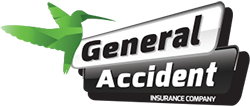Trip Tips Tyre checks to do before you drive off
Every vehicle owner should be able to do some basic checks before they drive out, especially on a long trip. And a good part to check them every once in a while are TYRES.
Do you know the type of tyres you use; their appropriate pressure and importantly, when to upgrade and change a worn tyre?

1. Identify the various types of tyres
Depending on the vehicle, tyres fall under different groups. Vehicles such as sedans and minivans require tyres that offer a smooth and reliable ride like “all-season” or “touring” tyres. A truck or a sports utility vehicle (SUV), however, may require more aggressive tyres such as “Highway”, “All-Terrain” or “Ribbed” tyres.
In the Caribbean, we do not need snow and ice tyres, so they should be avoided as they may lead to fatal accidents. Meanwhile, you can identify tyre sizes by looking at the side of the tyre; on each tyre, there is a series of numbers and letters. The letter may identify the speed rating, while the numbers refer to width, profile and rim size.
2. Appropriate tyre pressure
Knowing the correct tyre pressure ensures your tyres last longer and secures a comfortable and safe ride.
To be clear, what is best for a sedan may be different when compared to a luxury SUV. Find your vehicle’s recommended tyre pressure on a sticker somewhere inside the driver’s door, on the lid of the car’s trunk, in the console or even on the fuel door.
3. Know when to upgrade your tyres
This is always important as upgrading (or changing) your tyres improves the safety, performance and look of your vehicle. Depending on the frequency of use, tyres tend to last three to four years before the threads begin to wear. You should routinely check your vehicle and its tyre health; also considering the journeys it has taken you on. Quick dashes around town will have less impact on your tyres when compared to weekly business trips to the countryside.
It is important you check the tyre tread depth — each tyre should have a minimum of 6mm — if the tread is below that, it is recommended that the tyre/s are replaced before a long journey.
BONUS CHECK
4. Wheel Balancing and Alignment
Imbalanced or misaligned tyres make the journey uncomfortable and possibly unsafe. A shaky or juddering vehicle could mean that your car needs wheel alignment, especially if the areas you traverse have a lot of potholes.
Wheel balancing allows smoother rides at higher speeds. The process involves equalisation of the combined weight of tyre and wheel. The weights are added to the wheel to reduce the imbalance.
Front tyres always wear a little faster than rear ones as they experience more stress/wear. Be sure to rotate tyres, to the rear, so that the tyres can wear evenly.
Accidents do happen, but always bear the above tips in mind to ensure safety and efficiency wherever and whenever.


